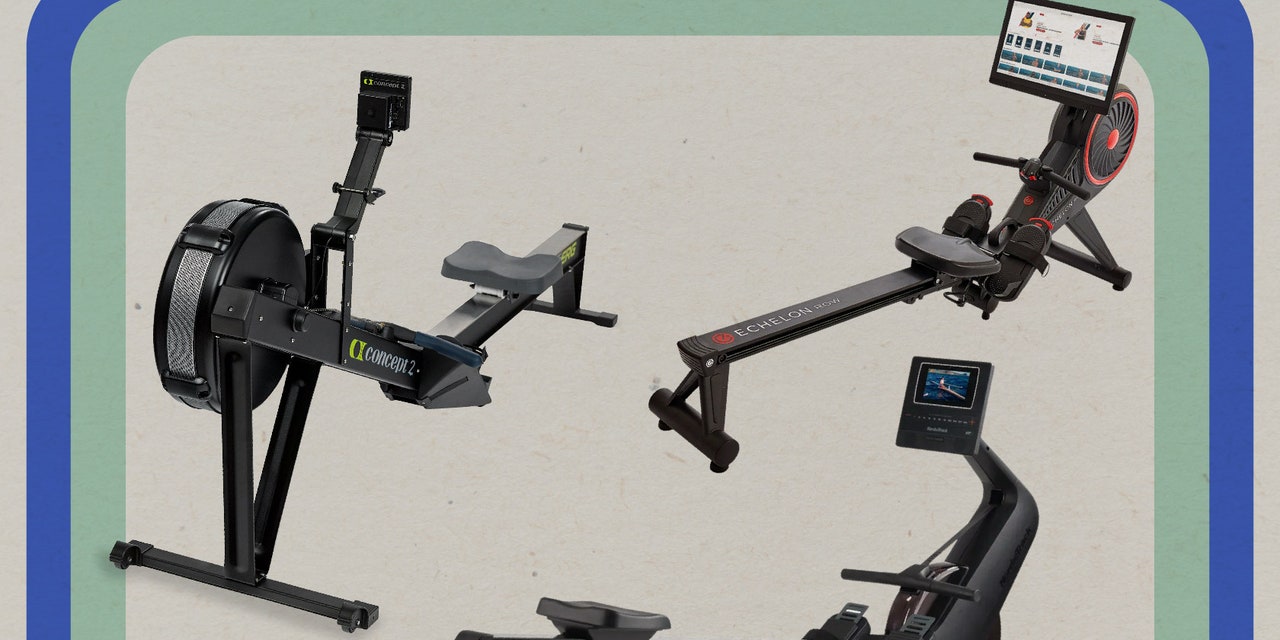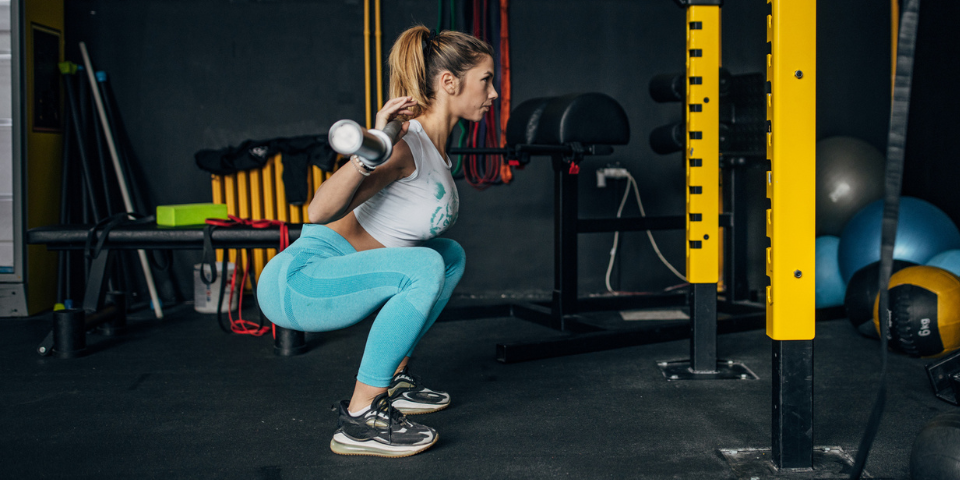7 Budget-Friendly Rowing Machines for All Fitness Levels

Just so you know: Our testers didn’t think the seat on this machine was all that comfortable. “I would really love for the seat to be contoured and cushioned, because it makes for more of an enjoyable ride,” one tester says. Some reviewers also say the resistance isn’t as strong as they’d like, even at the highest level.
Weight: 53.4 lbs | Dimensions: 80.7’’ L x 22.6’’ W x 22.4’’ H | Resistance Type: Magnetic | Weight Capacity: 285 lbs | Monitor: Small digital | Programming: None | Membership: None
Who is a budget rowing machine good for?
When purchasing a large piece of exercise equipment, quality matters. But that doesn’t mean you necessarily have to spend big. “A budget rower is a great option for folks who may not be able to afford a higher-end rowing machine,” says Kates. You’ll be able to do the namesake row movement on any budget machine, which is the most important part of the workout!
When comparing budget machines to higher-end rowers, Kates says you may see differences in durability, noise volume, the quality of the drivetrain (a.k.a. the part of the rower that drives the rowing movement), and technology. So, it’s important to assess how important any of those qualities are to you before picking a budget rower. For instance, if you couldn’t care less about programming and built-in streaming capability, you might be fine to opt for a lower-end model. “Knowing whether you want to come up with your own workouts or find a machine that provides instruction is an important differentiator,” Mahmud says.
She adds that it’s important to think about how often you’ll use the machine; if you plan to row hard seven days a week, you may want to invest in a machine that features better resistance, ergonomic designs, and a smoother row. But if you’re more of an occasional rower, or you’re a beginner, a slightly less advanced machine may work just fine. “Budget rowing machines are great if you’re just starting out and aren’t sure if rowing is going to be a long-term thing for you,” agrees Riemann.
How to pick the best budget rowing machine for you
Even when narrowing your search for the best rower to the most affordable options, there’s no shortage of models from which to pick. Here are the features experts specifically recommend considering before you buy:
Price
Rowing machines can range in price from a few hundred dollars (the cheapest on our list is the Sunny Health & Fitness Magnetic Rowing Machine, on sale for $250) to well over $3,000. Our list of budget-friendly options has a price ceiling of $1,800 retail—but most are often on sale for closer to $1,000 (or much less). The price tag tends to rise as the list of included product features expands, so it’s important to decide which features you need and which you are willing to leave behind.
The good news is that you can get a quality rower on the lower end of the price spectrum. “Rowers come at all price points, and higher cost doesn’t always mean better,” says Bradford Stevens NASM-CPT, director and founding instructor of Sole+ Studios.
Type of rower
Before you start shopping, it’s important to understand the differences between the various types of rowers so you can decide which is best for you. Each type—air, water, magnetic—has a different resistance mechanism. Here’s what to know about each type.
“Air rowers use a flywheel to create resistance, which can be adjusted by changing airflow to make it easier or harder,” Stevens says. Typically, the faster your row, the more resistance you’ll feel. According to Kates, this type of rower tends to be loudest of all types, given that the air flowing through the fan cages can create a wind sound.
A water rower uses a water-filled tank to create resistance. “For those who want the feel and sound of real water, a water rower is your best bet—it’s quieter than air rowers and has a soothing, more natural feel that mimics rowing in a racing shell,” says Stevens. Riemann agrees, adding that “they just look sleek!”
Using magnets to create resistance, these types of rowers generally offer more controlled adjustments than other rowers, says Stevens. “Magnetic resistance can be fine-tuned to apply varying pressure throughout each stroke, closely mimicking the feel of rowing on water—where resistance is greater as the oar enters and eases as the stroke completes,” he says. “Magnetic rowers are the quietest [rowers] and can closely replicate on-the-water resistance, though achieving that premium experience may cost a bit more.” Because they make less noise than other rowers, Riemann considers magnetic machines ideal for at-home workouts.
Resistance level
“Resistance on a rowing machine is the pressure felt on the cable that connects the handle to the machine, and it varies by machine type,” Stevens says. “For example, magnetic rowers can offer both consistent and adjustable resistance, while water or air rowers have resistance that naturally eases as you complete each stroke. Not all machines have adjustable resistance—some, like water rowers, let you change the water level [which increases or decreases resistance], but it’s not a quick adjustment.”
Size
“Rowing machines are long, with a larger footprint than a bike or treadmill,” says Stevens. “Most can stand upright or fold up, but check if your space has enough floor length and ceiling height to store it vertically or position it when flat.”
Environment
Some rowers, particularly those with built-in monitors, may need to be kept in a climate-controlled environment to avoid potential issues with the electronics, says Stevens.
Maintenance and durability
According to Stevens, some machines may require more frequent maintenance than others, especially if they’re stored in a garage or used outdoors. Some water rowers also require flushing out and cleaning the tank and to stop any bacteria growth. “Check reviews to see how well different models hold up over time and what type of maintenance they need,” Stevens says.
Features
Features vary from rower to rower; here, a few factors to take into consideration when shopping for a machine that best fits your needs:
According to Kates, one of the main differentiators between a budget rower and a high-end rower is the level of technology available. Some machines will have a basic LCD screen that shows workout stats, while others may have a fancier touchscreen that lets you stream workouts and Netflix while you row. Not everyone will benefit from high-end features, however. “Serious rowers and athletes often prefer a more minimal display, ” says Stevens. “It lets them focus on the repetitive motion and build mental resilience,” he says.
Some rowers act as a vessel for unlimited studio-fitness classes through their own platforms or third-party apps, while others mimic the simplicity of a DIY workout on the water. Neither option is inherently better, but the best for you comes down to personal preference (and willingness to shell out for any associated membership fees). “As someone who loves classes and does not want to think during workouts, being able to access classes is something I would absolutely pay extra for,” Claudette Sariya, NASM-CPT tells SELF.
Noise can vary significantly between different types of rowing machines, says Stevens. “Air rowers tend to be the loudest, water rowers have a pleasant, natural sound, and magnetic rowers are the quietest,” he says. “Think about where you’ll use it and whether noise might be an issue.”
You’ll want to look for a machine that fits your body and can comfortably support your weight, says Stevens. “Some rowers offer adjustable footrests, ergonomic handles, and cushioned seats, which can make longer sessions much more enjoyable,” he says.
Customer service
Because good customer support can be “invaluable,” Stevens suggests looking into how easy it is to get help from the manufacturer when you need it. “It may make a difference if you run into any issues,” he says. Riemann also recommends checking the return policy, just in case something major goes wrong or you change your mind.
Warranty
Warranties can be especially important on a less expensive rower, says Kates. “A cheaper piece of equipment may be manufactured using less resilient materials, so its longevity may be questionable,” she says.
Assembly
Some budget rowers require more assembly than others. “Check if it’s easy to put together, because assembly can be a pain,” says Riemann. Reading reviews can be helpful here.
How we test rowing machines
Below, find a few categories we specifically took into account while evaluating budget rowing machines. And for more detail on everything we consider before recommending a piece of equipment, check out our full fitness testing methodology.
It’s great to save money on a machine, but not if it’s going to break after just a few uses. For this reason, our testers put these budget rowers through their paces to ensure they don’t break down during a long or intense row. They also considered the quality of each machine’s construction in their evaluation, noticing the materials (steel and aluminum versus plastic, for instance) and whether it felt stable while in use.
We think it’s important that the equipment we recommend be adjustable, customizable, and ergonomic (ACE) so that it can work for your body and needs. As such, our testers looked for rowers with easily adjustable resistance levels; footholds that could shrink or grow to accommodate a range of shoe and foot sizes; and machines with contoured seating and grippy, cushioned handlebars.
Rowers take up quite a bit of space, so our testers consider not just dimensions, but also folding and storage capabilities. They also tested ease of transport by clocking how heavy each machine is and whether or not it features wheels.
FAQs
Is it worth buying a cheap rowing machine?
This depends on your personal preferences. “More expensive machines tend to be more geared towards connected fitness, while less expensive lets you choose your adventure,” Mahmud says. Riemann adds that budget models can be great for beginners, but if you’re planning to row regularly or want a smoother, quieter ride, you might want to invest more in a higher-quality machine.
How much do budget rowing machines cost?
Our list of budget rowing machines ranges in price from a few hundred dollars to $1,800—but most models are often on sale for closer to (or much less than) $1,000. The more expensive options include higher-tech features and programming capability, while the cheaper options are much simpler in function.
Is 20 minutes a day on a rowing machine enough?
The World Health Organization recommends adults get at least 150 minutes of moderate physical activity per week, which shakes out to about 21 minutes per day. Mahmud adds that 20- to 30-minute workouts should help folks improve rowing skills.
What is the best type of rowing machine for beginners?
Reimann recommends magnetic models for beginners, which she describes as simple and user-friendly. “They’re usually quieter, affordable, and easy to handle, which is great when you’re just getting into rowing,” she says. “Magnetic rowers are especially nice because the resistance is smooth and consistent, so you can focus on learning good form without overdoing it. Starting with something straightforward helps you build confidence and a solid routine without feeling overwhelmed.”
What type of resistance is best on a rowing machine?
According to Stevens, there is no one type of resistance that’s best. “It’s about finding the one that matches your goals and preferences,” he says. Air rowers, like the Concept2 RowErg, offer variable resistance, which means the resistance increases the faster you row. Magnetic rowers, like the NordicTrack RW600, are much quieter, and they tend to offer more manually adjustable resistance levels than other types of rowers. And water rowers, like the Yosuda Water Rowing Machine, are great for those who want to simulate rowing on the water.
Are budget rowing machines reliable?
Budget machines can be reliable, but Stevens says that if you’re planning to use your rower a lot, you may want to invest a bit more in a durable machine. If you opt for a cheaper piece of equipment, it’s a good idea to check the warranty details before buying, so you’ll know what’s covered if something breaks down.
Related:





